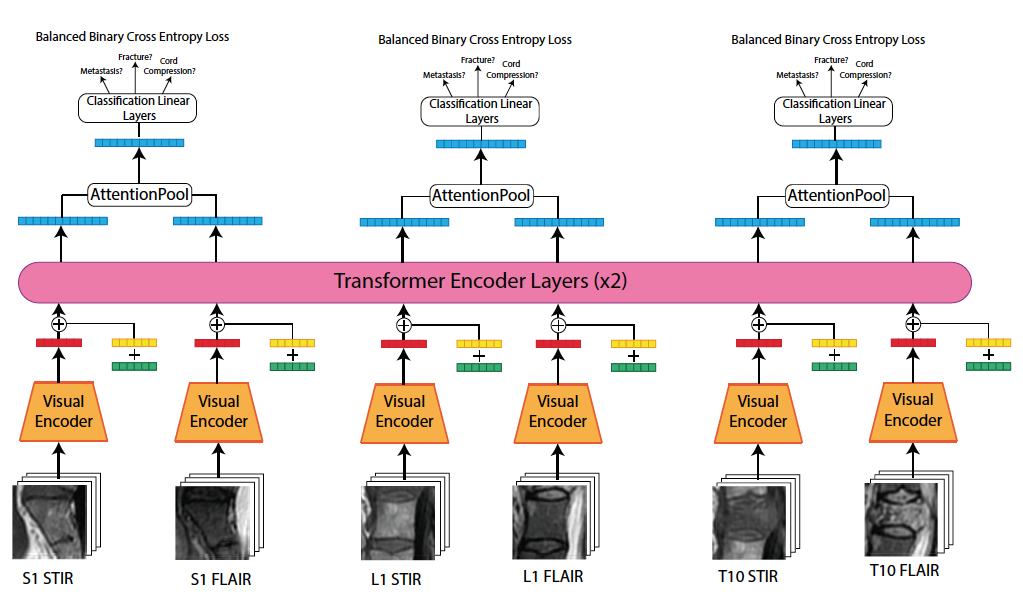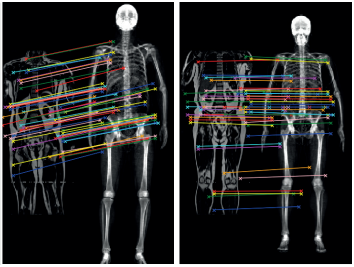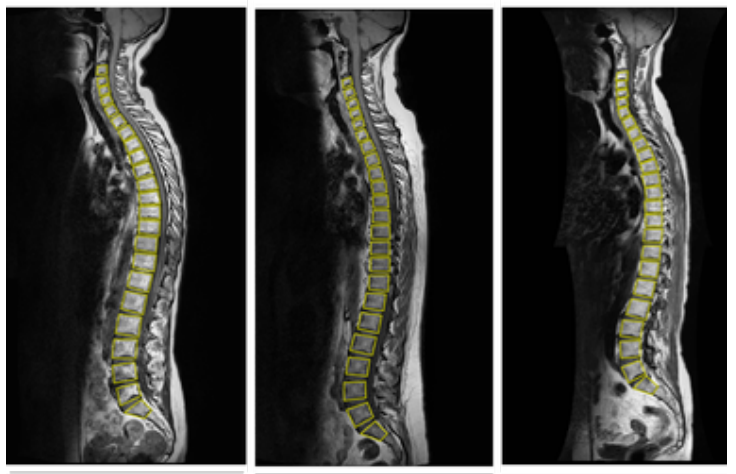About
Broadly, my research focuses on leveraging the latest advances in computer vision to build tools which are clinically useful. Over the course of my PhD, this has been mostly related disease classification in spinal MRIs. Other topics I have worked on include: self-supervised learning (MICCAI '21), multi-modal learning (MICCAI '21, '22), segmentation (MedNeurips '21) and natural language processing (MIDL 2023).
Publications

Vision-Language Modelling For Radiological Imaging and Reports In The Low Data Regime
Rhydian Windsor, Amir Jamaludin, Timor Kadir, Andrew ZissermanMIDL 2023
Oral Presentation. Code coming soon
Description:
The paper explores training medical VLMs with limited data, common in medical imaging. We evaluate methods like adapting pre-trained models, using local and global contrastive loss functions and also adding extra supervision. Tested on paired chest X-rays and reports, our approach matches CLIP and BioVIL trained with 10x the data. Recommendations for training VLMs on other medical imaging modalities with limited data are provided.Arxiv | Project Page

Context-Aware Transformers For Spinal Cancer Detection and Radiological Grading
Rhydian Windsor, Amir Jamaludin, Timor Kadir, Andrew ZissermanMedical Image Computing and Computer Aided Intervention (MICCAI) 2022
Early Acceptance
Description:
This work considers problems in medical image analysis that involve extracting features from multiple views. For example slices in a MRI, multiple modalities (MRI sequences, CT, X-Ray etc.) or different parts of anatomy (e.g. several vertebrae). We apply our suggested model to: (i) detecting spinal cancer using information from free-text radiological report (ii) radiological grading. In both cases, our models outperform single-vertebrae, single-modality models currently used in medical image analysis.Arxiv

SpineNetV2: Automated Detection, Labelling and Radiological Grading Of Clinical MR Scans
Rhydian Windsor, Amir Jamaludin, Timor Kadir, Andrew ZissermanTechnical Report
Description:
Technical paper describing SpineNetV2, an automated system for: (i) detecting and labelling vertebrae in clinical MR scans of varying pulse sequence and field-of-view, and (ii) performing radiological grading of intervertebral discs in T2 lumbar scans for a range of common conditions. We estimate this software reduces the time to grade a scan from around 10 minutes when done manually by an expert, to around 2 seconds.Arxiv | Code

Self-Supervised Multi-Modal Alignment for Whole Body Medical Imaging
Rhydian Windsor, Amir Jamaludin, Timor Kadir, Andrew ZissermanMedical Image Computing and Computer Aided Intervention (MICCAI) 2021
Description:
Proposes a novel method of contrastive, self-supervised learning for datasets with multiple scan modalities for each subject. By matching together DXA and MRI whole body scans from the UK Biobank, we show we can learn features useful for downstream tasks such as unsupervised registration and cross-modal segmentation.Arxiv | Project Page | Code

A Convolutional Approach to Vertebrae Detection and Labelling in Whole Spine MRI
Rhydian Windsor, Amir Jamaludin, Timor Kadir, Andrew ZissermanMedical Image Computing and Computer Aided Intervention (MICCAI) 2020
Early Acceptance, Oral
Description:
A new method for detecting and identifying vertebrae in spinal MR scans robust to field of view, sequence and pathology. We suggest a novel language-modelling based approach to labelling vertebrae sequences allowing for cases such as transitional vertebrae, variable vertebrae numbers and missing detections. This system achieves state-of-the-art performance across a range of clinical datasets and is the basis of SpineNetV2's detection system.Arxiv | Project Page

The Ladder Algorithm: Finding Repetitive Structures in Medical Images by Induction
Rhydian Windsor, Amir JamaludinIEEE International Symposium on Biomedical Imaging (ISBI) 2020
Oral
Description:
A simple yet effective method for detecting vertebrae in clinical MR. Given an anchor detection, e.g. S1, the model recurrently detects the next vertebrae moving up the spine to C3. Requires very little data and can be trained on lumbar scans then applied to whole spine scans without adaption (the first deep-learning model to do this).Arxiv
Software

SpineNet V2
Rhydian Windsor, Amir JamaludinDescription:
Software to automatically detect and label vertebrae in clinical MR scans and perform radiological grading for a range of common spinal degenerative disorders. SpineNet has been used in multiple large international studies on the aetiology of back pain. We also collaborate with a major pharmaceutical company, using SpineNet to measure the progression of a common autoimmune disease in clinical trials.Project Page Code
Conference Abstracts
A Novel Deep Learning Architecture To Detect Spinal Metastases, Vertebral Fractures and Cord Compression Using Information Extracted From Radiological Reports
Sarim Ather, Rhydian Windsor, Amir Jamaludin
RCR Annual Conference 2022
3D Spinal Column Segmentation with Single Plane 2D-Projected Annotations
Rhydian Windsor, Amir Jamaludin, Timor Kadir, Andrew Zisserman
Medical Imaging meets NeurIPS 2021
Machine Learning Based Berlin Scoring Of Magnetic Resonance Images of the Spine in Patients with Ankylosing Spondylitis from the Measure 1 Study
Amir Jamaludin, Rhydian Windsor, Sarim Ather, Timor Kadir, Andrew Zisserman, Jürgen Braun, Lianne S Gensler, Pedro M Machado, Mikkel Østergaard, Denis Poddubnyy, Thibaud Coroller, Brian Porter, Shepard Mpofu, Aimee Readie
European League Against Rheumatism (EULAR) 2020
Machine Learning Based Berlin Scoring Of Magnetic Resonance Images of the Spine in Patients with Ankylosing Spondylitis: Analysis of Data from a Phase 3 Trial with Secukinumab
Amir Jamaludin, Rhydian Windsor, Sarim Ather, Timor Kadir, Andrew Zisserman, Jürgen Braun, Lianne S Gensler, Pedro M Machado, Mikkel Østergaard, Denis Poddubnyy, Thibaud Coroller, Brian Porter, Shepard Mpofu, Aimee Readie
American College of Rheumatology Convergence (ACR) 2020
A Novel Methodology To Differentiate Shrinkage Versus Erosion in CBCT Images of Lung Cancer Tumours
George Needham*, Rhydian Windsor*, William Beasley, Marcel van Herk, Eliana Vasquez Osorio, Marianne Aznar, Alan McWilliam
European Conference Of Medical Physics (ECMP) 2018
Best Poster Award